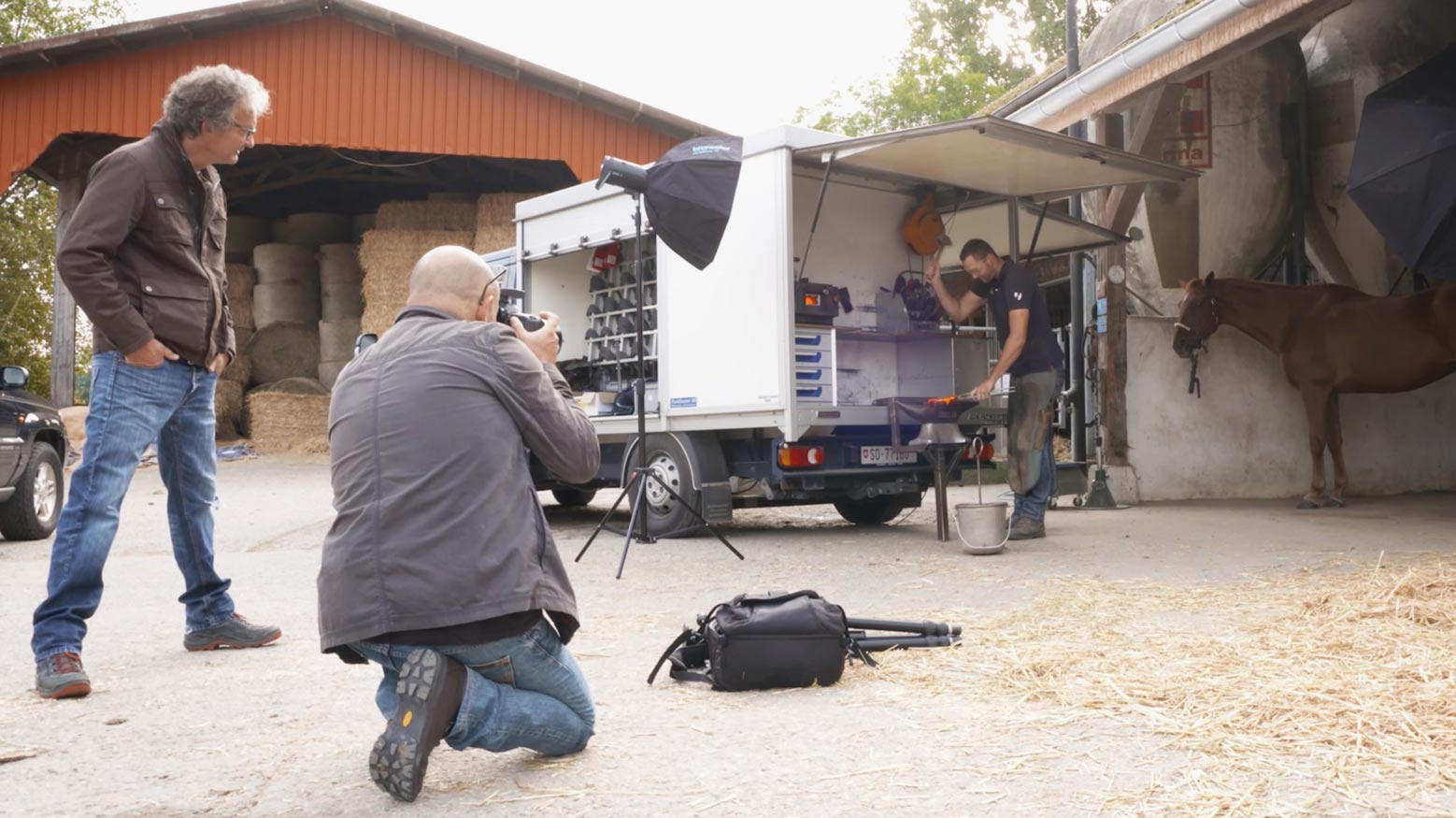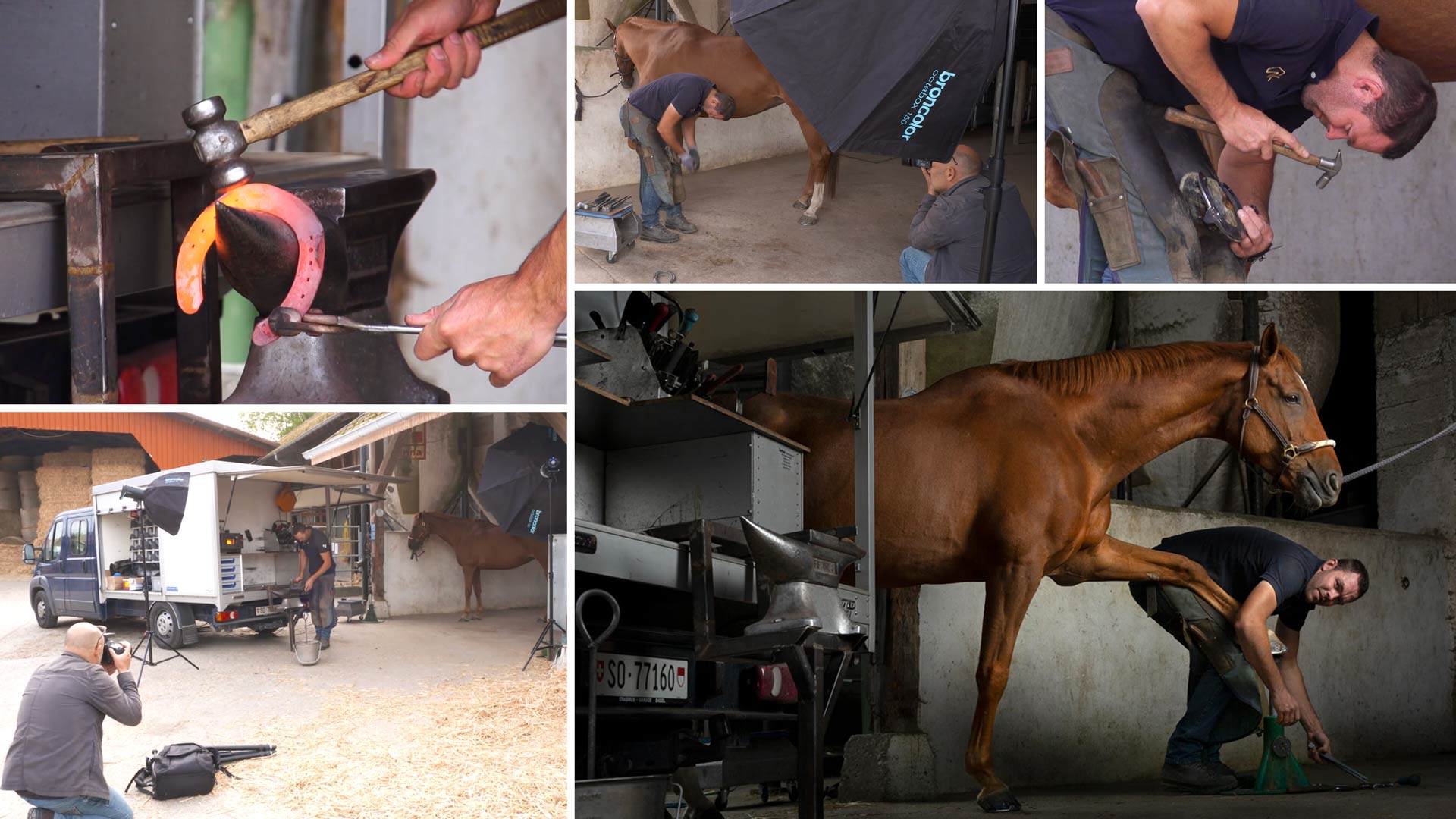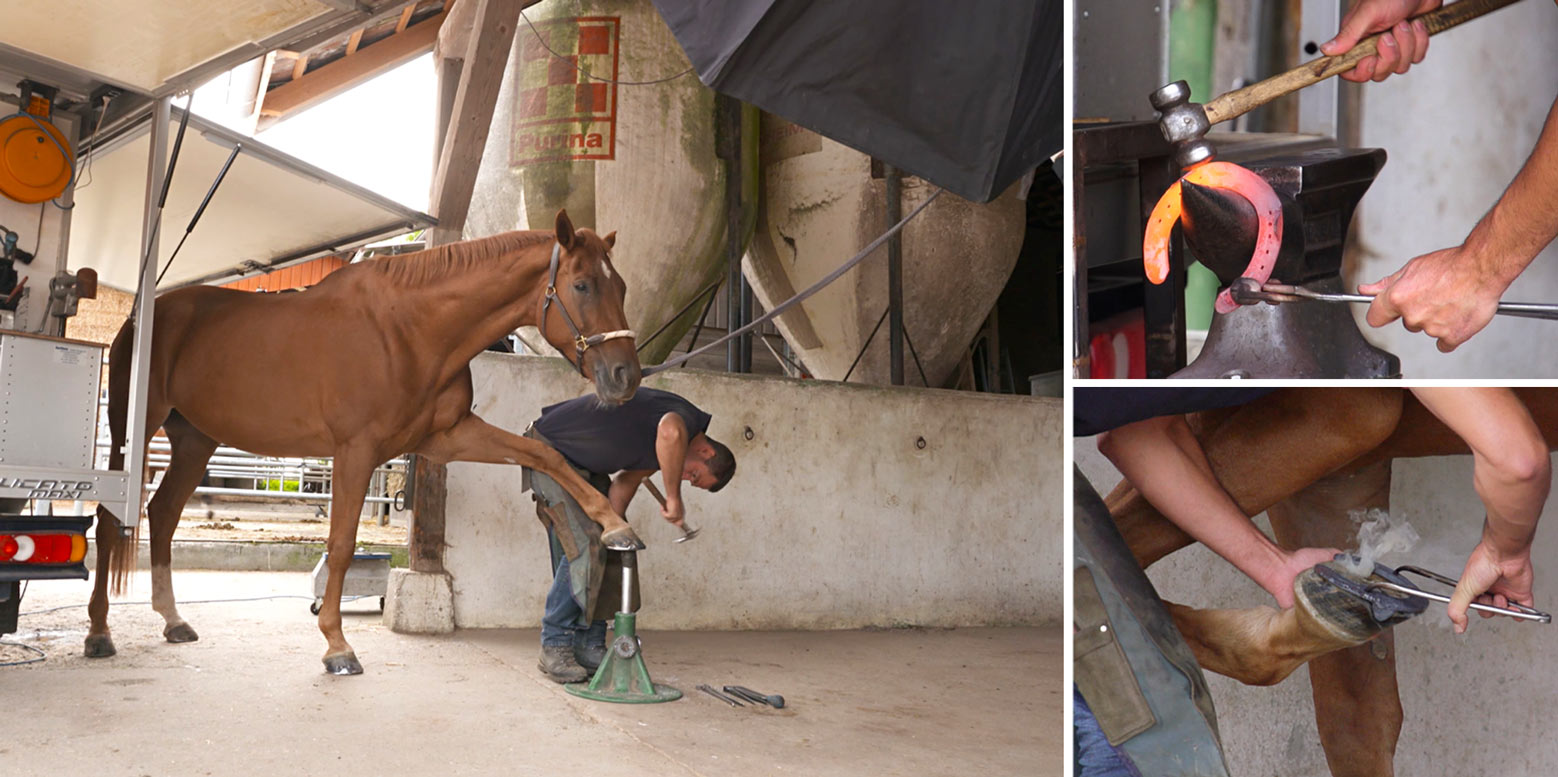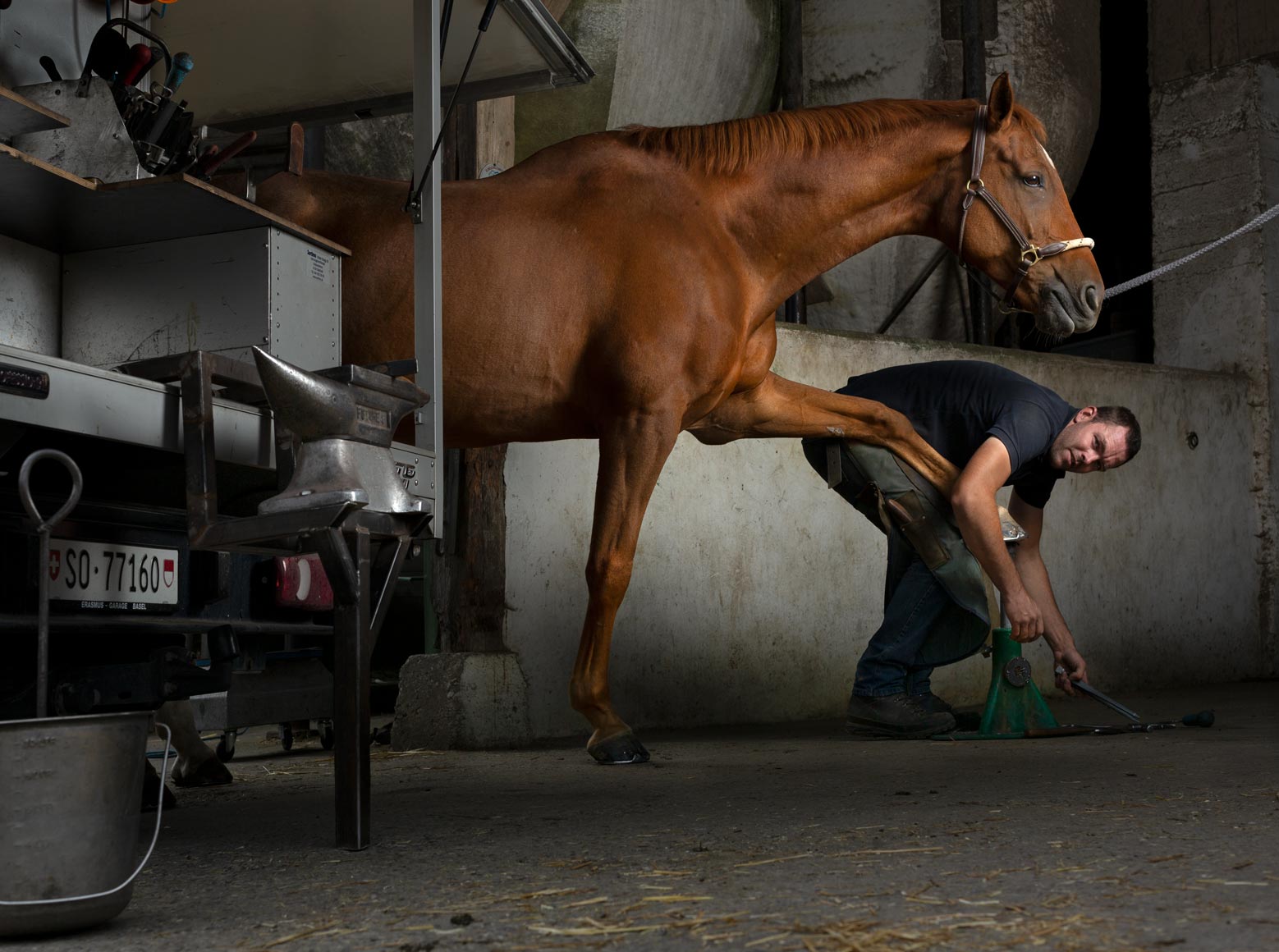Environmental Portraits: Farrier
Photographers have an easier job than farriers. But there’s still a lot to learn if you want to do it right.
Environmental portraits of people are one thing. Environmental portraits of people and animals are another!
In this class, you’ll follow Karl as he photographs a farrier at work with his horse, working in a dusty stable-yard in bright sunlight.
This class will teach you to overcome challenges, including cutting out ambient light, balancing multiple lights, and getting the best composition.
You’ll see the step-by-step process of achieving this shot as Karl shares his camera settings and lighting setup, explaining his thought process and creative decisions.
In this class:
- How to photograph environmental portraits
- How to reduce ambient light when using flash
- How to combine natural light and flash
- Lighting setups for environmental portraits
- Camera settings for environmental portraits
Questions? Please post them in the comments section below.
With many environmental portraits, your subject remains in a fairly fixed position. However, there are exceptions to this, as was the case with this shoot. Instead of working in a fixed position, my subject kept moving between his rig and horse; this meant a versatile lighting setup that would cover both positions was essential.
Working in fairly bright conditions, in a concrete stable-yard also meant I had a lot of ambient light to deal with. This made it particularly tricky as I wanted to achieve a more moody, atmospheric image. This meant I had to adjust my camera settings accordingly to cut out as much daylight as possible.

For this shoot, camera settings and lighting had to be adjusting accordingly to cut out the ambient daylight.
Finding the best composition was a further challenge that required testing a few different angles, adjusting my lights accordingly and even asking my subject to change the way he worked. In the end, after careful thought and attention to detail, I was able to get a couple of shots that I was very pleased with, as you’ll have seen in the class.




Comments
Good stuff and beautiful images … watching tutorials like this is very helpful for pre-visualizing and preparing for similar shoots so thank you very much.
I was just wondering whether High Speed Sync would be a good way to help reduce the amount of daylight in the image especially if you wanted to have a shallower depth of field for any particular shot.
Cheers
Hi Snowman, Thank you and yes HSS is also an option to reduce the ambient light.
This was a great module – a different type of lesson and I liked it a lot. There are a few principles you continue to emphasize – keep it simple, build up the shot and move fast to make the most of the time. I continue to learn a lot from every single session.
Awesome.
Very elegant lighting, light / texture of the horse is beautiful.
Cheers Dave.
Simply educational. Stunningly beautiful. Deeply satisfying. Truly inspiring. As usual, I am grateful. Thank you, Karl.
Thank you Kevin.
Hi Karl. Love the videos mate. Very informative.
Im a beginner so please excuse me if the answer to my question is an obvious one. Would you be able to achieve the same results using continuous lighting?
Cheers
Hi Nick, in many situations you can but in this one unlikely because it would not have been bright enough and if it was it would have been too bright for people to function. The advantage of flash is that it can be extremely bright but is only for 1/2000th of a second and by being so bright I can even overpower the daylight which is what I did here. You can imagine how bright continuous lights shining through soft-boxes would need to be if they had to overpower the daylight. Most new photographers fear flash lighting at first because they believe it will be easier to work with something they can see but ultimately they realise that you can see it with the modelling lamps (especially in a studio) and you have more versatility with flash powers from very low to very high.
Thanks so much for the clear response. That all makes total sense.
Looking forward to watching more of your videos
Cheers
Hi Karl, thank you for showing how you and your team work behind the scene. It’s really eye opening! May I ask if it is a paid job assignment or did you approach them to for permission to shoot the educational video.
Thank you and looking forward to more great content.
Hi Plastickid, no all of these were shot as tutorials but based exactly on how I would shoot them for a clients annual report or brochure, obviously without the film crew!
Wonderful presentation! Beautiful emotional images! Can’t wait for “social distancing” to be lifted so I may venture out for a similar project.
Question; The final photo was shot at 1/320. Shouldn’t this have caused an issue with flash sync? It appeared that you were shooting with a DSLR who’s sync speed would have maxed out at 1/200?
Hi Anthony, Thank you and yes it should be 1/200 – 1/250th but sometimes it seems you can get away with it and it just looks like a soft black line, almost like a grad filter at the bottom. On this occassion I just tried it and it seemed to work.
Thank You!
Thank you Karl and team for that adventure. But you’ll have to learn German and Schwiizerdütsch. 😉 Danke schön.
I could almost sense the computing power as you worked out the lighting equations, at speed, throughout the shot – this is something I am still taking quite a while over! Beautiful painting with light in the end product.
Thank you David. Yes I was trying to figure the best balance of daylight with flash so that it looked dramatic but not too artificial, in the end I opted for slightly less daylight to give it the drama.
A real pleasure to watch you working, Karl; like always.
Thank you Bogdan.
Wow! This images is FANTASTIC! Great! Master Thank you very much!
Thank you Lucas very kind.
Your final shot is beautiful…man and animal united in a common flow…great composition! Also astonished at the horse’s ‘stoicism’! Learning more and more thanks to your lessons!
Thank you very much and glad you are enjoying the platform.
Great session Karl. Thank you. I’ve enjoyed these environmental sessions and hope to see many more. Looking forward to the next one.
Hi Geoff, thank you and yes when things get back to normal we plan to do more of these.
I’m just gonna keep it simple……..STUNNING!!
Thank you Alan, very kind.